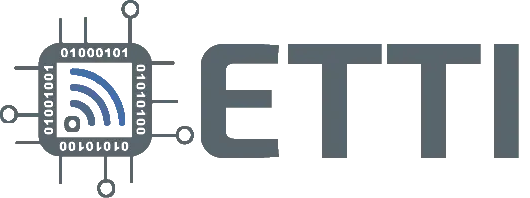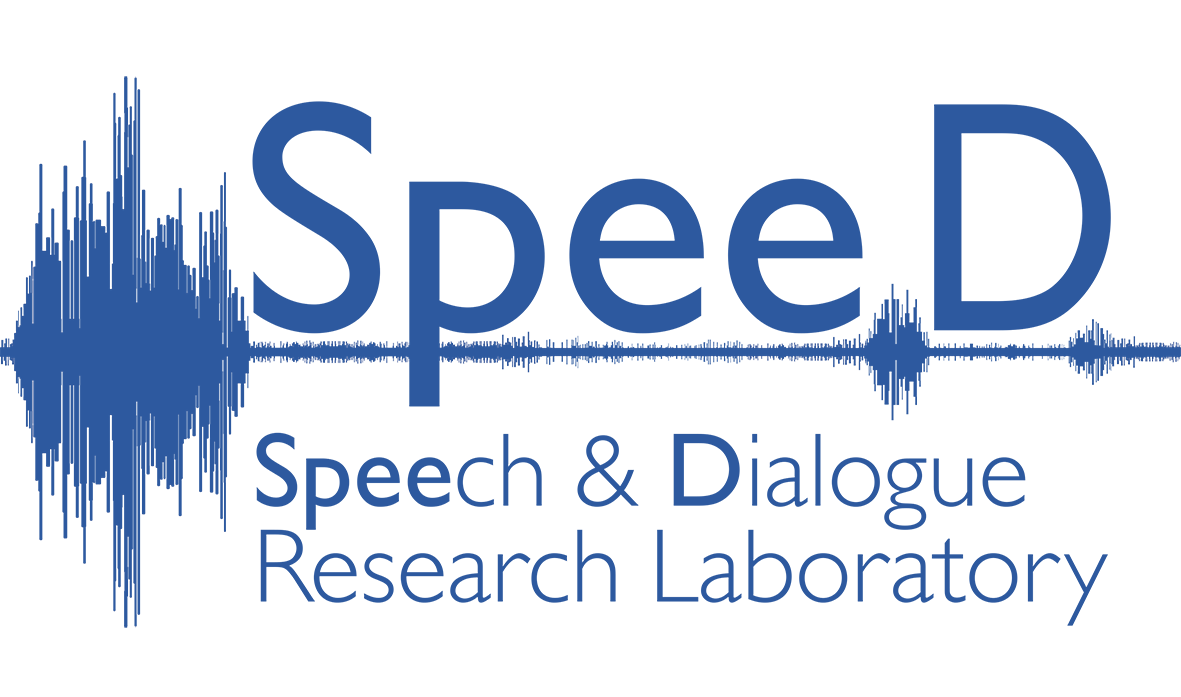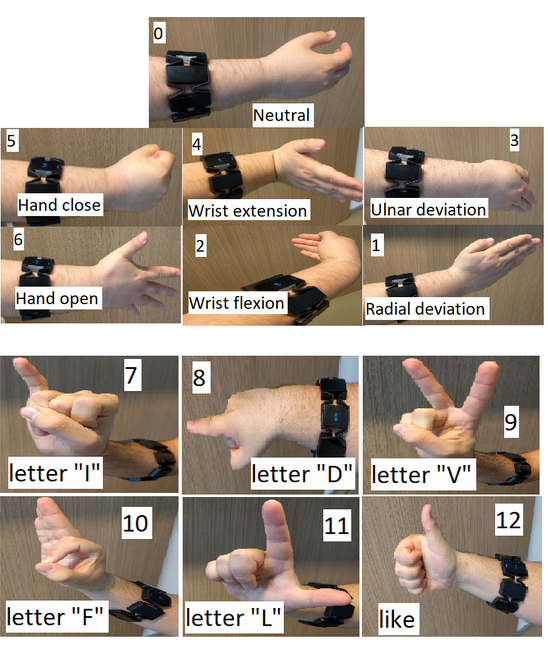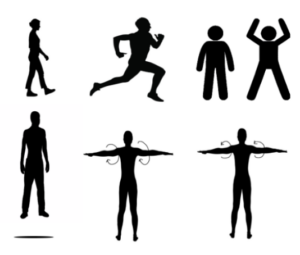EMG Datasets
RAW EMG CORPUS
License
Licensed under Creative Commons BY-NC-ND 4.0.
Description
This corpus is comprised of raw EMG data containing 13 of the most used gestures. Data was collected from able-bodied young males and females aged between 20-25. The acquisition hardware was the Myo Armband from Thalmic Labs. The armband has 8 surface EMG sensors placed circularly around the forearm.
There are 2 types of subjects:
- “First-time” subjects: they had no prior experience about the setup and the experiment.
- “Experimented” subjects: they know the setup and the experiment.
The “first-time” subjects had to do 2 rounds of gestures; in the first one the gesture was shown and they instructed to freely repeat it; for the second round they were shown how to correctly execute the gesture and asked to repeat the experiment. “Experimented” subjects only did the second round, because they knew how to perform each gesture.
All the gestures in the corpus are depicted in the following figures:
All the files in the corpus have the same format: XXXX_YY_G_T where:
XXXX is the ID of the user. If it starts with 0 it’s a “first time” subject and if it starts with “2” is an “experimented” subject.
YY is the label of the gesture.
G is the gender of the user: M for males and F for females
T is the type of gesture: L for free gesture (first round of “first-time” subjects) and A for assisted gesture (second round of “first-time” subjects).
Download EMG Raw Corpus (pass: emg)
RAW PHYSICAL ACTIVITIY DATASET
License
Licensed under Creative Commons BY-NC-ND 4.0.
Description
This corpus consists of raw data of human movement during 6 different common physical activities. Data was collected from 23 able-bodied individuals, aged between 16-30. Majority of the subjects were male (22 males, 1 female). The acquisition hardware consisted of self-made bracelets which were attached to both the arms and the legs (4 in total). Each bracelet was powered by an ESP32, and had an MPU6500 sensor with a 3-axis accelerometer and a 3-axis gyroscope.
Each subject did the exercise for about 2-3 minutes uninterruptedly. In between the exercises, they had brakes. The activities were: running, walking, jumping jacks, stand-still jumping, forward arm rotation and backward arm rotation, as depicted in the figure below:
A data sample consists of 500 tuples of data. A tuple is collected from all 4 bracelets, with 6 axes each, at the same time. The tuples are collected at a time interval of 4 milliseconds. Added to the data sample are the id of the physical exercise (between 0 and 5), and the id of the subject (between 0 and 22).
Keep in mind that acceleration is measured in meters / second and angular velocity (gyroscope) is measured in radians / second for each of the three physical axes.
The physical activities are indexed from 0 to 5 in this order: running, walking, jumping jacks, stand-still jumping, forward arm rotation and backward arm rotation.
Thus, the data is organized in a csv file as follows:
- On each line there is a data sample with 12002 values (described above).
- The first 500 values describe the value of acceleration on the X-axis measured by the first bracelet, the next 500 values describe the value of acceleration on the Y-axis measured by the first bracelet, the next 500 values describe the value of acceleration on the Z-axis measured by the first bracelet.
- The next 1500 values also belong to the first bracelet, but correspond to the angular velocity.
- Concatenated to this row are 3 similar chunks of 3000 values, but for the other bracelets (for the right arm, right leg, left leg in this order).
- The last 2 values in the row correspond to the exercise id and then to the subject id (which are described above).
The corpus was created by Alexandru Iulius Jerpelea and Rares Mihai Iordache, with the guidance of Ana-Antonia Neacsu, PhD, National University of Science and Technology POLITEHNICA Bucharest.
For more information about how the dataset was created and then processed by the authors, visit this Github.
Download the Raw Physical Activity dataset (pass: emg)




